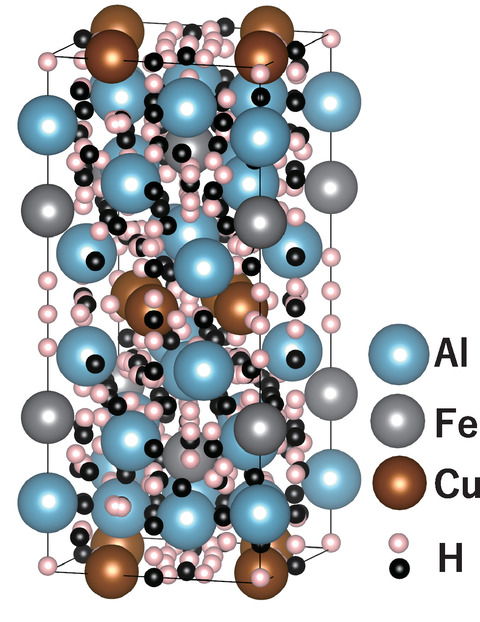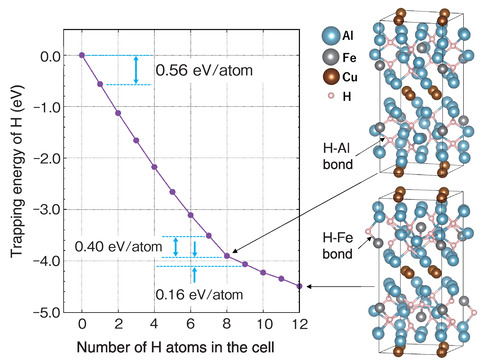
Fig.9-7 Crystal structure of an Al7FeCu2 compound and position of hydrogen atoms

Fig.9-8 Hydrogen storage capacity of Al7FeCu2 compounds in aluminum
Although aluminum alloys have been commercially used for decades, significant improvements to their strength have not been made in many years. It has long been known that the strength of aluminum alloys, such as duralumin, which is used in aircraft bodies, has been improved by adding more zinc elements several ten years ago. However, adding alloying elements in this fashion tends to produce high-strength aluminum alloys that are susceptible to fracture due to hydrogen embrittlement because hydrogen penetrates the material during manufacturing. Hydrogen is the smallest element and thus can move quickly inside an aluminum lattice. Further, clarifying the behavior of hydrogen inside a lattice is difficult; the impact of hydrogen on the deformation and fracturing of an alloy has not been characterized well. However, reducing the hydrogen concentration in an aluminum alloy could prevent hydrogen embrittlement.
Thus, a compound that absorbs hydrogen in aluminum alloys and increases its concentration could prevent hydrogen embrittlement of aluminum lattice, because it reduces the content of hydrogen in aluminum lattice. Using first-principles calculations to investigate various compounds' ability to absorb hydrogen, we discovered that an Al7FeCu2 compound strongly absorbs hydrogen.
The crystal structure of the Al7FeCu2 compound and the possible interstitial sites where hydrogen atoms can be absorbed are shown in Fig.9-7. Here, a Voronoi polyhedron division method was used to find the positions where hydrogen atoms are likely to enter. Next, the positions that could trap hydrogen atoms firmly were found by calculating the trapping energy from first-principles calculations. Furthermore, as shown in Fig.9-8, the amount of hydrogen absorbed in the cell was calculated.
Experimental work confirmed the effect of suppressing hydrogen embrittlement by increasing the Al7FeCu2 content in an aluminum alloy. Therefore, we submitted a patent application in Japan with Kyushu University detailing this embrittlement prevention method and alloy that is less susceptible to hydrogen embrittlement (Japanese Patent Application No.2020-96333).
This research was supported by a joint industry-academia basic research program (No.JPMJSK1412) of the Japan Science and Technology Agency (JST).
(Masatake Yamaguchi)
<Previous: 9-3 | Next: 10 Development of Science & Technology for Nuclear Nonproliferation>